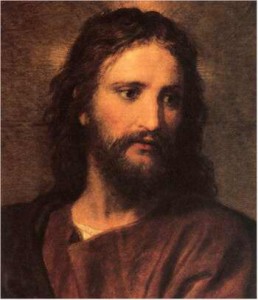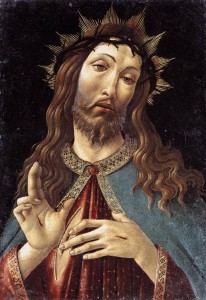Jesus, a probationer?
May 12th, 2011 by admin
I have a question.
Was not Jesus already a high degree initiate, raised by the Essenes, who at the baptism gave his body over to the Christ spirit who dwelt in him until the crucifixion? I ask this because here you said that Jesus was merely a probationer for the 18 years leading up to the baptism, after which he then simply became a disciple. Cosmic memory shows the many lives of Jesus leading up to the baptism. He was a great miricle worker long before this. How many probationers (or even disciples) have this capability?
Richard,
First, let me explain that the article you refer to, The Rosicrucian Way, was published in the Rays magazine in 1996, and it was originally authored by the late Beryl Hamilton, who was a member of The Rosicrucian Fellowship. The article most likely was the text from a talk which she gave at the Fellowship. The information concerning Jesus’ status as probationer or disciple was her interpretation – colored by her perceptions. That stated, I will give some of my thoughts on the subject.
The terms “disciple” and “probationer” or their equivalent would not be consistent throughout all periods of history. Furthermore, depending on one’s source, whether it is from a version of the Bible or from an initiate, a clairvoyant or other authoritative and highly regarded source, there will always be variations with not all “witnesses” in agreement.
It is apparent to me that evolutionary progression of a soul’s experience through successive incarnations does not necessarily follow a linear path that coincides with the soul’s development in real time. There may be multiple reasons for this, but one reason may be because, ie: what would seem to be the obvious next step (for example, apparent progression from student to probationer to disciple) may not best serve the purpose of any given rebirth.
There may be a certain specific objective for an incarnation – possibly to provide service and the best way to serve in a certain milieu is to be unwitting and blind, possibly through a “developmental injury.” Also, there is always the possibility of regression. One may be an initiate, but a certain debt must yet need to be repaid. If the final lessons to be learned by the prodigal spirit are lessons of humility, one can imagine what kinds of situations teach humility.
Therefore, it is not always evident; most of us cannot make a surface assessment and discern who is (or was?) a disciple or an initiate.
Witnesses at all levels err. We see creation “through a glass darkly.” Some see more clearly than others, but one must rely on his own powers of observation and his own discrimination as it suits his own purpose – acting according to what he sees, evaluating the results, and modifying future actions accordingly.
Regarding seership, when asked how to best develop the ability to recognize truth, Heindel said that by faithfully performing the evening exercise: forming impartial judgment of oneself night after night, one learns to discern truth from error in a degree not attainable in any other way. …… It develops an inner faculty and no matter what statement is made to you, once you have developed this, you will know at once whether it rings true or the reverse. [Letters to Students, p 99]
To learn about what and how another individual “sees” helps us to learn about ourselves, but it is through our own direct experiences that we learn best. Like you, my guess is that Jesus had achieved a very high state through his progression “from clod to God.” In order to receive The Christ with its extremely high vibration, he must have attained a very high degree of purity in all of his vehicles and have had an impeccable character. Does it not make sense, however, that even a precocious child grows and matures into adulthood with many of the same trials as lesser children, trials which take a certain amount of time? As far as I know, to some extent we are all born blind.
It’s very difficult to compare Jesus to so-called probationers and disciples of today. Disciples and initiates do not identify themselves as such and do not laud their own achievements, so it’s impossible to know who they are among us – how many are guiding us, either in or out of the Fellowship. According to Heindel, we can identify them by their fruits. If you do a keyword search of the Heindel complete works, (which I highly recommend—the CD is available from the Fellowship) you will note that Heindel gives interesting facts about these various classifications in many passages throughout his writings. …ER


I found this discussion of Jesus and probationers and disciples interesting. But from a boarder perspective ( broadrer Rosicrucian vantage point) it is always helpful to avail oneself of all legitimate sources regarding spiritual ideas especially in the most complex subject of Jesus and the Christ Being. Though not always comfortable to consider, there are other sources that contribute to MH investigations and teaching on the subject. Manly Hall, for example, though not an initiate per se, is an excellent source to broaden one’s understanding of great spiritual figures and esoteric philosophies in history. Eduard Shure’s, The Great Initiates, also is a good source. The Rosicrucian Enlightenment By Frances Yates is highly regarded (history and influence in the 17th century). Ultimately, if one is going to dig deep for the ‘truth”, comparative study must be done. One essential source is the Fifth Gospel by Rudolf Steiner where he attempts to fill in the gaps of the Gospels, and in particular the life of Jesus, from age 12 to 30 and his journeys and travels to nearby regions. He did spend some time with Essenes as an honorary member but rejected their path eventually due to their isolationism and non involvement with the community and suffering at large.
In this lecture series, Jesus is depicted as a explorer and seeker but not teacher yet. He is gradually unfolding insight and experience in decadent religious practices of his time in and around Palestine. He does not come across as “an clairvoyant or intiate” at first but a man driven to discover essentials spiritual issues of the times namely the nature of evil and its insidious impact on the people and the cultures around him. He appears to be undergoing a gradually awakening to his mission culminating in the descent of the the Solar Being . It is also well established that
Jesus was the great Zarathrustra in a previous life and had great knowledge and wisdom within him but as is the cases, a full awakening to inner soul status comes gradually and not in a “enlightenment event”. Zarathrustra set the stage for coming of Christ hundreds of years earlier as Ahura Mazdao, the Sun Spirit, (as Christ was gradually approaching the earth).
i really like that 1889 Hofmann picture of Christ, ER. nice article too, so thanks.
Roger, It’s my favorite, and I would like to find a better, sharper image. It is judged to be idealized. The contrast of the Hofmann portrait with that of the Da Vinci at the end of the article I found very interesting. It contrasts the 33-year old Jesus in the bloom of youth – at the threshold of his ministry – in an idealized representation —– to the Da Vinci’s Jesus Christ at the end of the road, so to speak. A lot could be discussed concerning what is the human condition; what is divinity, etc. It would be a wonderful idea for a slide presentation. I hope somebody does it.
I have a print of Hofmann’s “Christ and the Rich Young Ruler” that hangs beside my bed where I see each morning upon rising, it is one of my favorites also. I have scanned an image of fair resolution and posted it online for you online at http://www.facebook.com/photo.php?pid=7005362&l=ebf4799dfe&id=518903533